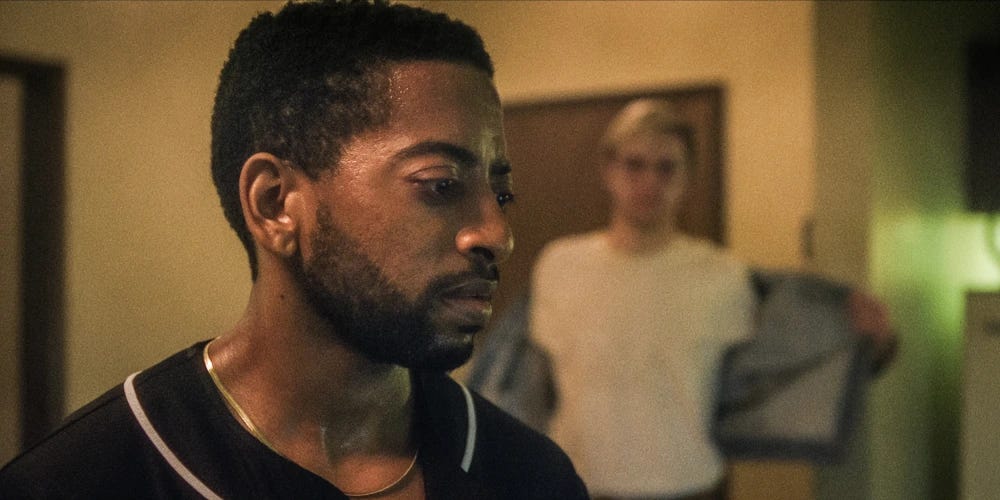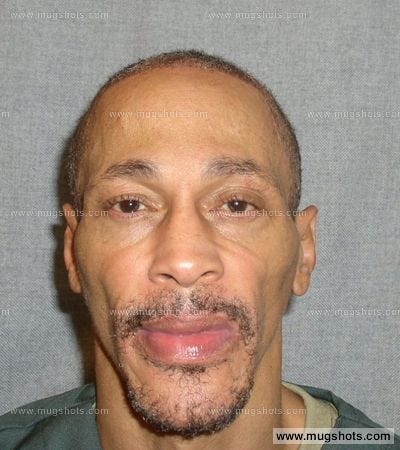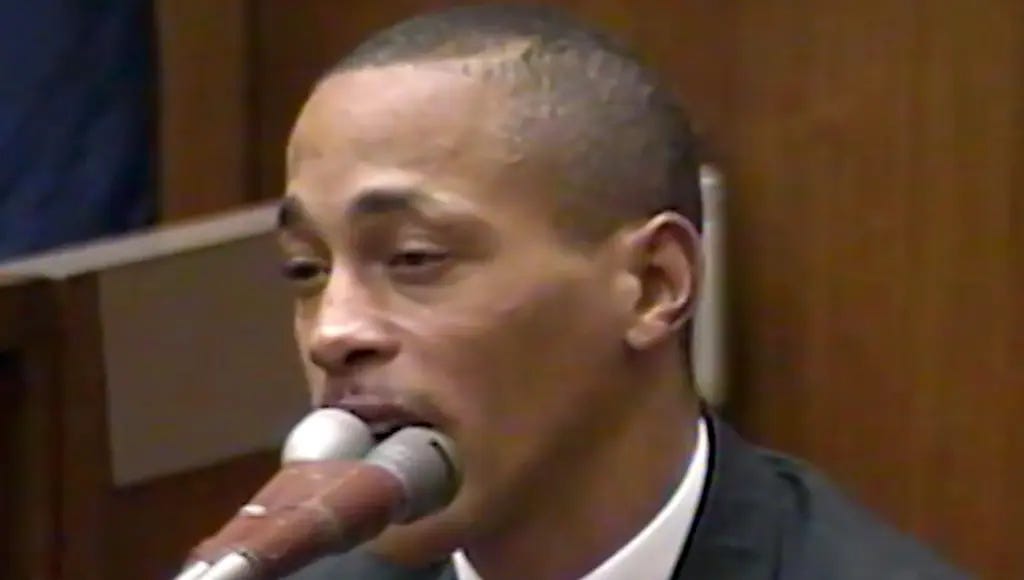Tracy Edwards: The Dark Secret Behind the Jeffrey Dahmer 'Hero' Story
Why Netflix won't tell you about Tracy Edwards' real victims.
The Hero Narrative That Captivated America
For decades, Tracy Edwards has been celebrated as the unlikely hero who escaped from ‘‘serial killer’’ Jeffrey Dahmer’s apartment on that fateful night of July 22, 1991. His story of survival, courage, and quick thinking became a cornerstone of true crime folklore, inspiring countless documentaries, books, and media appearances.
At least, that was what we were led to believe.
But what if everything we were told about Tracy Edwards was carefully constructed fiction? What if the truth behind this story was far more shocking than anyone imagined?
This investigation dives deep to uncover the real story—one that will leave you questioning everything.
Keep reading. You won’t want to miss this.
The Official Story: A Tale of Heroism
According to widely circulated accounts, Tracy Edwards was approached by Dahmer on July 22, 1991, with an offer of money to pose for photographs. The narrative describes how Edwards:
Noticed suspicious odors and chemicals in Dahmer’s apartment.
Was handcuffed and threatened with a knife.
Heard Dahmer’s chilling declaration about eating his heart.
Managed to escape by punching Dahmer and fleeing.
Flagged down police officers at 11:30 p.m.
Led authorities back to discover the ‘horrific evidence.’
This unforgettable account has been repeated in countless media sources, from Wikipedia entries to television documentaries, and more, creating a powerful and emotional story of survival against impossible odds…
In 2022, Netflix brought this chilling scene to life in their hit series Monster: The Jeffrey Dahmer Story, gripping audiences worldwide.

The Shocking Phil Donahue Show Revelation
However, a 1991 appearance on the Phil Donahue Show (shown below) reveals a drastically different picture of Tracy Edwards. The host made a startling disclosure that has been largely overlooked by mainstream media:
‘‘...under indictment in Tupelo, Mississippi, for sexual battery. Accused of sexually abusing a 13-year-old girl. You should also know that Mr. Edwards’s charges of capital rape were dropped by the grand jury.’’
Capital rape is defined as a crime punishable by the death penalty. It refers to a rape offense so severe, usually involving a young child and specific aggravating factors, that the state’s law designates it as eligible for the most extreme penalties.
These aggravating factors can include:
Significant physical injury to the victim, especially to sexual organs.
The offender being an adult (e.g., 18 or older).
The crime involving extreme brutality or cruelty.
Prior convictions of the offender for similar sexual offenses.
This means Edwards was facing potential execution before he fled Mississippi in the fall of 1990 (Edwards’ escape was highlighted by ‘first on the scene’ crime reporter Anne E. Schwartz in her 2021 book, Monster, about Jeffrey Dahmer), before his involvement in the Jeffrey Dahmer case.
(*Credit to our fantastic contributor Sunny for originally finding this important video clip!)
The Pattern of Convenient Timing
The timing raises critical questions:
Before the Dahmer case: Facing death penalty for capital rape of a child.
During the Dahmer case: Becomes a celebrated hero and key ‘witness.’
After the Dahmer case: Serious charges mysteriously dropped.
A 1991 Deseret News article titled Survivor of Dahmer Ordeal Is Jailed on a Charge of Sexually Assaulting a Child (published August 8, 1991) provides additional context about Edwards’ criminal background:
‘‘The man who escaped Jeffrey Dahmer and then led police to the confessed serial killer was himself in jail Thursday on a charge of sexual battery of a child in Mississippi.
Police in Tupelo, Miss., said detectives recognized Tracy Edwards, 32, on television interviews he gave about the Dahmer case.
Edwards was indicted by a Lee County, Miss., grand jury on a charge of sexual battery of a child for allegedly having intercourse in September 1990 with a 13-year-old girl who was a relative of his girlfriend.
Tupelo Deputy Police Chief Jerry Crocker said detectives were surprised to see Edwards being interviewed about the Dahmer case and recognized him.’’
The Aftermath: From ‘Hero’ to Homicide
The story takes another dark turn. According to ABC News reporting from October 31, 2011, Edwards was later charged with homicide in a separate case, contradicting the heroic image carefully crafted by media narratives.
This raises uncomfortable questions: How did someone with such an extensive criminal history become the face of ‘justice’ in one of America’s most notorious (and highly questionable) serial killer cases?
Here’s what the ABC News article titled Jeffrey Dahmer Hero Charged With Homicide reveals:
‘‘A man who narrowly escaped death at the hands of serial killer Jeffrey Dahmer and led police to Dahmer’s grisly house of horrors two decades ago has been arrested and charged with a homicide of his own.
Tracy Edwards was hailed as a hero on July 22, 1991 for leading police to discover Dahmer’s 17 dismembered victims, ending a spree of cannibalistic homicides by one of the country’s most notorious murderers.
Twenty years later almost to the day, Edwards was arrested on July 26, 2011 and accused of throwing a man to his death off a Milwaukee bridge.
At the time of his arrest, Edwards, now 52, was homeless and had been moving from shelter to shelter since at least 2002.
He was seen standing on a bridge over the Milwaukee River with two other homeless men, Timothy Carr and Jonny Jordan. A witness at a gas station across the street saw Edwards and Carr push Jordan some 20 feet into the river below and called the cops, according to police reports. By the time cops arrived, Jordan had drowned, police said.’’
Media Manipulation and Public Perception
The Edwards case exemplifies how easily public perception can be shaped. In the aftermath, Edwards has been widely portrayed by the media as a tragic ‘fallen hero,’ and social media has followed suit, flooded with countless posts and comments praising him as a hero.
Take a look at just a few examples:
‘‘Tracy fought hard... He single-handedly saved countless lives.’’
‘‘This man saved so many lives. So much respect and empathy for what he went through and has had to live with.’’
‘‘He saved so many lives. Bless this man.’’
‘‘You’re an incredible soul.’’
‘‘Mr Edwards was so courageous!’’
‘‘My heart breaks for him and the others. God bless you, Mr Edwards.’’
‘‘... All the love and respect for Mr. Edwards.’’
You get the picture..
These reactions demonstrate the power of narrative construction and how compelling stories can override factual investigation.
But here’s the truth: 66-year-old Edwards has a long criminal history, including charges for battery, domestic abuse, drug offenses, and more.
All of this is publicly available information, yet it’s been conveniently ignored by the media.
The Missing Witnesses: Where Were Officers Rauth and Mueller?
One of the most glaring omissions in the official Dahmer narrative involves the two police officers who allegedly made the arrest. Officers Robert Rauth and Rolf Mueller, who supposedly encountered Tracy Edwards on July 22, 1991, and subsequently arrested Jeffrey Dahmer, were noticeably absent from the witness stand.
Their side of the story? Nowhere to be found.
Despite being central figures in what should have been one of the most significant arrests in criminal history, these officers never provided public testimony about their experience.
Why would police officers who discovered such horrific evidence—multiple severed heads, human organs, and dismembered bodies—not testify?
The only voice we’ve heard is that of Tracy Edwards, whose gripping account of his alleged six-hour ordeal has been shared in countless interviews and media appearances.
According to the official narrative, on the night of July 22, 1991, Tracy Edwards, desperate and with a handcuff still dangling from one wrist, flagged down police officers on a Milwaukee street. His frantic plea led them to apartment 213 at 924 N. 25th Street—a place that would soon become infamous.
Edwards claimed Jeffrey Dahmer had locked the handcuffs on him, and the officers were there to retrieve the key. The following excerpt is from the book Grilling Dahmer by Robyn Maharaj:
‘‘After what Edwards had experienced in the several hours before his escape, he was just thankful to be out and on the street, though frightened his attacker might have followed and would catch up to him. Edwards flagged down the first police cruiser that he saw.
The two officers recognized immediately that their keys would not remove his cuffs, as the handcuffs were not Milwaukee Police Department-issued, and it was someone other than a fellow officer who had attached them.
Edwards desperately wanted the cuffs removed and for this reason alone he finally agreed, after much persuasion on the part of the police, to accompany the officers back to Oxford Apartments #213, a couple of short blocks away.’’
This narrative is further illustrated in the following excerpt from Wikipedia:
‘‘At 11:30 p.m. on July 22, Edwards flagged down two Milwaukee police officers, Robert Rauth and Rolf Mueller, at the corner of North 25th Street.
The officers noted Edwards had a handcuff attached to his wrist, whereupon he explained to the officers that a ‘‘freak’’ had placed the handcuffs upon him and asked if the police could remove them.
When the officers’ handcuff keys failed to fit the brand of handcuffs, Edwards agreed to accompany the officers to the apartment where, Edwards stated, he had spent the previous five hours before escaping.’’
Remember, if this were a real case, what followed would be considered an illegal search.
Yet, the inconsistencies don’t stop there. The confession even mentions the “attempted homicide” of Tracy, raising even more questions:
Here’s the most baffling part: despite Tracy’s detailed testimony and the media frenzy over the ‘evidence’ found in Dahmer’s apartment, Dahmer was never charged for this attempted homicide. How does that even happen? Another glaring oversight.
Adding to the strangeness, the prevailing narrative also reports that Dahmer worked six nights a week as a mixer at the Milwaukee Ambrosia Chocolate Factory, clocking in from 11 p.m. to 7 a.m., with only Saturday nights off.
How could he have possibly accommodated this grueling schedule with the alleged string of murders? Was he some kind of superhuman?
The story doesn’t just have holes—it’s a maze of contradictions. The deeper you dig, the more bizarre and poorly constructed it all seems.
The Bigger Questions
This investigation into Tracy Edwards raises several critical issues:
1. Media Responsibility
How can major news outlets present someone with a serious criminal record as an unquestioned hero?
2. Narrative Construction
What other aspects of high-profile cases might be similarly constructed or manipulated?
3. Justice System Integrity
Was Edwards’ cooperation in the Jeffrey Dahmer story part of a plea arrangement that allowed serious charges to be dropped?
4. Public Trust
How do these revelations impact our trust in official narratives and media reporting?
What This Means for True Crime
The true crime genre’s popularity has created an environment where compelling narratives often take precedence over rigorous fact-checking. The Edwards case serves as a cautionary tale about:
The danger of accepting dramatic stories without verification.
The need for multiple sources and cross-referencing.
The importance of examining all participants’ backgrounds.
The ethical implications of hero/villain narratives.
As consumers of true crime content, we must:
Demand evidence for extraordinary claims.
Support investigative journalism that challenges official stories.
Remain skeptical of sensational accounts without corroboration.
Conclusion: Reexamining Everything
The Tracy Edwards case forces us to confront uncomfortable truths about media manipulation, narrative construction, and the justice system. It challenges us to look beyond compelling stories and demand factual accuracy.
If the ‘‘hero’’ of the Dahmer case was actually facing the death penalty for capital rape, what other assumptions about this case—and others like it—need to be reexamined?
The truth may be more complex and disturbing than the simplified and amplified narratives we’ve been fed. But only by confronting these uncomfortable realities can we hope to understand what really happened and prevent similar manipulations in the future.
What are your thoughts on these revelations about Tracy Edwards? Have you encountered other cases where the official narrative doesn’t match the available evidence? Share your insights in the comments below.









This is one of your best pieces yet! First, I find it hard to believe that someone would practically beg and plead with police to take him back to the apartment of a man who almost murdered him and said he wanted to eat his heart... just to get a handcuff key. I'd think most people would just saw the handcuff off. Nobody in their right mind would return to an apartment where they almost got murdered.
It makes sense to me that he was facing serious charges that got dropped. That seems to be a major theme with a lot of "victims" in these fake cases. They're facing serious charges or have a record that gets wiped clean just like magic!
Great work!!
I never thought about the no extra charges brought against Dahmer for the Edward's incident. Something else did come to question on that. Dahmer supposedly was not charged for Toumis death because of lack of evidence, but he supposedly got rid of other victims bodies to the same extent but was charged for them. Fishy fishy